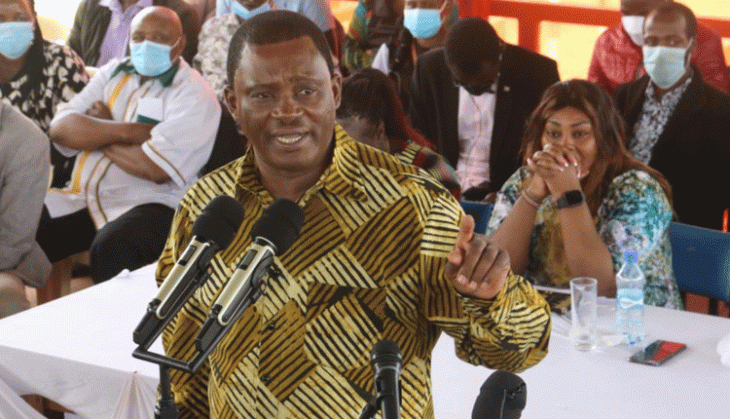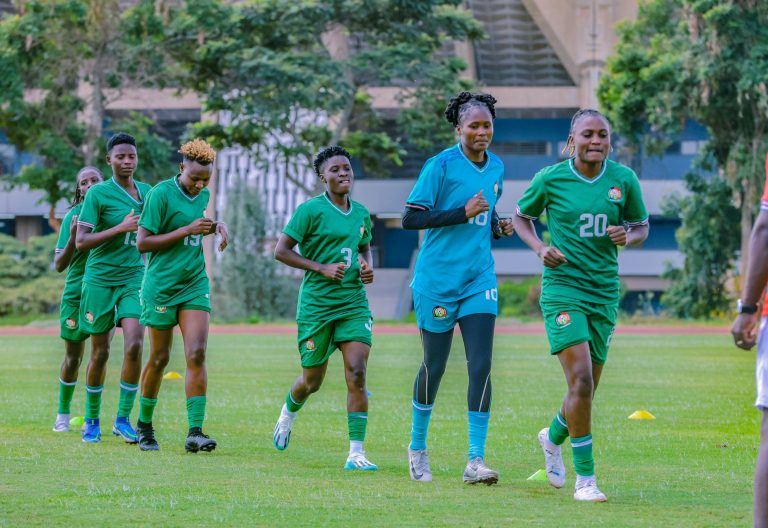Today in history: Rape, assault and murder -When male students at St Kizito, Meru attacked their female schoolmates

In July 1991, the people of Kenya woke up to sad and horrifying news that 19 female students at St Kizito Secondary School in Meru were murdered.
75 others lay in hospital recuperating from assault and rape at the hands of their male schoolmates. Youngmen whom they had treated and thought of as family, friends and brothers.
On the night of 13th July 1991, the boys at St Kizito went on rampage, complaining of humiliation after the school administration failed to pay fees necessary for their participation in an interschool athletic competition.
From reports by the Weekly Review run by the late Hillary Ngweno (who died on July 6, 2021) trouble started at St. Kizito when the 271 girls refused to join a strike planned by the boys.
The boys then chose to stage a strike against the school administration led by the then principal James Laiboni.
The girls had refused to take part in the planned strike, a move that infuriated the boys, who began to threaten the girls with physical violence.
In a case that sparked wild debate and outrage within the country and beyond, it’s said that the angry male students planned to teach the girls a lesson.
To carry out their plan, the boys cut the electricity supply to the girls’ dormitory causing a temporary blackout before they disconnected the school’s phone line making it difficult for any distress calls to be made outside the institution.
A worker at the institution said some of the boys were covered in sheets and armed with flashlights, headed to the girls dormitory, to pick the girls whom they suspected of having sexual relations with school officials so as to teach them a lesson for rejecting the planned strike.
“After 9pm,the first clue that madness had broken out at the boarding school appeared when the house of Massimo Ballottino, the administrator of the Tigania hospital which neighbours St. Kizito by a few kilometers went dark,” a local publication said.
The boys then began screaming while throwing rocks at the girls’ dorms which were made of cinder blocks and tin roofs
Taking a security precacution, the girls then retreated to one dormitory that was fairly secured because of the metal bars on the windows.
However, the boys broke the windows with rocks and continued to terrorize the girls by throwing rocks onto the tin roof of the dormitory.
A few minutes to 2am, Rev. Alexander Kiranja, who ran a mission next to St. Kizito, was awakened by a thunderous knocking on his door.
Kiranja identified the persons at his door as terrified watchmen from St Kizito who informed him that the boys were on a rampage and had threatened them with death by stoning.
Since Kiranja had no phone, he led the watchmen next door to the hospital to call police.
Kiranja said he did not go to the school with the watchmen to try and restore or fearing that the move to enter the school when the boys were unruly would be fatal.
Back at school, the 271 girls hurdled themselves into one dormitory as the boys forced their way into the dorm, hitting the door in an attempt to get to them, the girls, scared and hysteric rushed to the far corner of the room.
The door finally, gave way and the boys rushed in to the dorm.
“We were attacked as if by a pack of hungry hyenas,” one girl later told reporters. The girls retreated to a corner and it was at that corner that 19-dead bodies, were found piled on top of each other.
“I have never seen anything like it,” Ballottino who ran a mission next to the school said. “It was like civil war. There were bodies everywhere.They were already stiff. The doctor said they had been dead about 3 hours.” Autopsies conducted on the dead bodies showed that none of the dead had been raped.
“We sat where we were hiding from until around 3am when a teacher whom we know walked into the dorm and told us that it was safe to walk out,” Mary Nkatha, a Form 2 student at that time told a local TV station in a 2013 interview.
Nkatha recalls that upon walking out, the surivors of the ordeal were met by police and locals.
“They were in shock when they arrived,” John Mutembei, a clinical nurse on duty at Tigno Hospital that night told reporters.
“They said there was a riot at the school and boys were beating them.They complained of body ache saying that they had been raped.”
However, what sparked controversy and debate was the principal James Laiboni’s statement. Laiboni, the head adminstrator, told the reporter for The Kenya Times that; “In the past, the boys would scare the girls out of their dormitories and in the process they would get hold of them and drag them to the bush where they would ‘do their thing’ and the matter would end there with the students going back to their respective dormitories.”
The deputy principal, Joyce Kithira, was quoted by the same publication as having told President Daniel arap Moi that “the boys never meant any harm against the girls, they just wanted to rape.”
Author
Collins Osanya
Collins Osanya is a multimedia journalist, communications specialist, and creative writer.
View all posts by Collins Osanya










